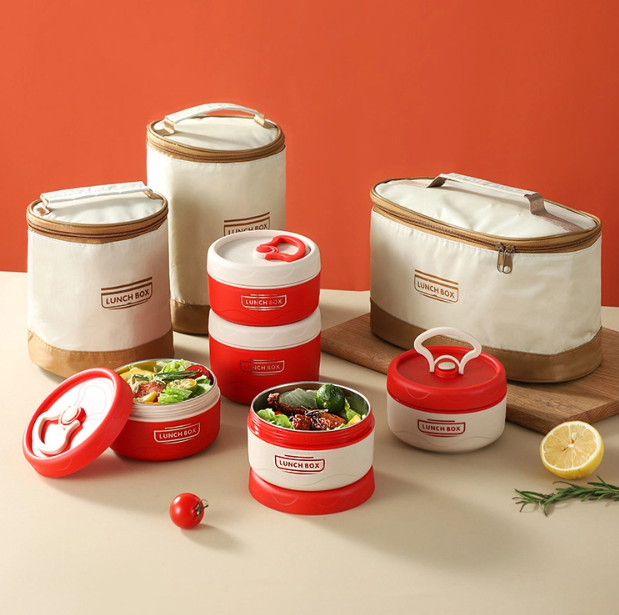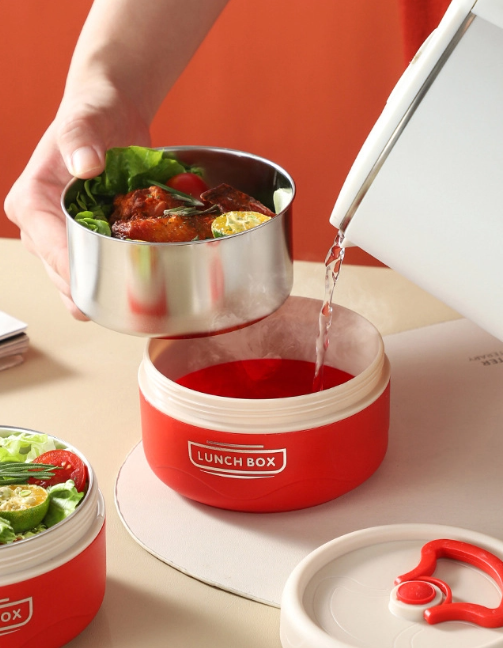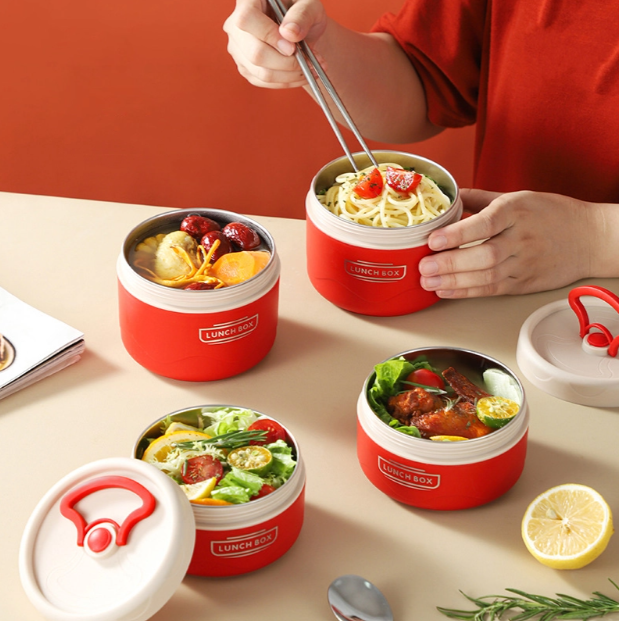
Packing a lunch box can be a challenge. How do you make sure your child gets the right nutrients while keeping it exciting?
In this article, we'll explore why packing a lunch box matters for your child's growth and energy levels. We'll also tackle the challenges of packing meals that are both healthy and enjoyable.
By the end of this post, you'll know what to include in a balanced lunch box, along with creative ideas that your kids will love.
Essential Components for Every Kid’s Lunch Box
Protein: Why It's Essential for Energy and Growth
Protein is the building block of the body, supporting growth and repair. It also helps maintain energy levels, making it a crucial component of any kid's lunch box. Aim for lean proteins that are easy to eat and digest.
Examples:
Chicken slices
Hard-boiled eggs
Yogurt
Cheese
Fruits: The Nutritional Benefits and How to Incorporate Them
Fruits are a great source of vitamins, fiber, and antioxidants. They can boost immunity and keep kids hydrated. Including a variety of colorful fruits also helps keep the lunch box visually appealing.
Examples:
Apples (add lemon juice to keep fresh)
Berries (blueberries, strawberries)
Grapes (cut in half for safety)
Dried fruits (like apricots or cranberries)
Vegetables: Making Veggies Appealing for Kids
Vegetables are rich in fiber, vitamins, and minerals, but many kids aren’t fond of them. The key is to present them in fun, creative ways to make them more appetizing.
Examples:
Carrot sticks (paired with hummus)
Cucumbers (sliced or in fun shapes)
Bell peppers (sweet and crunchy)
Avocado (spread on bread or cut into slices)
![lunch box lunch box]()
Balancing Nutrition in Kids Lunch Boxes
The Protein, Fiber, Fat, and Carbs Balance
To create a well-balanced meal, it's important to mix protein, fiber, healthy fats, and carbohydrates. Each food group provides a specific nutrient that contributes to overall health and keeps kids energized throughout the day. For example, pairing protein with whole grains and fruits ensures a balanced intake of essential nutrients.
Tip: Keep the balance simple with a formula: protein + whole grain + fruit + vegetable + a healthy fat (like nuts or avocado).
Portion Control: Understanding Portion Sizes Based on Age and Activity Level
Not all kids need the same amount of food. A toddler’s lunch box will look different from that of a teenager. Pay attention to portion sizes based on your child’s age, activity level, and appetite. For example, younger kids might need smaller portions of protein and carbs, while older children may require larger servings to keep them satisfied.
Fun and Creative Ideas for Packing a Lunch Box
Fun Snacks: Turning Everyday Snacks into Exciting Options
Kids are more likely to eat snacks that are fun and interactive. Think of creative ways to make fruits, veggies, and other healthy snacks more appealing.
Examples:
Veggie sticks with dip (carrots, celery, cucumbers)
Fun sandwich shapes (using cookie cutters)
Fruit kabobs (skewered fruits for easy eating)
DIY Lunchables: Letting Kids Create Their Own Lunch Combinations
DIY lunchables allow kids to assemble their own meals. It makes lunchtime more interactive and gives them control over what they eat, which may encourage them to try new foods.
Examples:
Deli meats, cheese slices, and whole-grain crackers
Veggies like cherry tomatoes and cucumbers, paired with a dip
Fruits like grapes or apple slices
Themed Lunch Boxes: Making Lunch Visually Appealing
Themed lunch boxes can make lunchtime more exciting for kids. You can create themed meals based on their interests, like their favorite animals, characters, or seasons. This adds a fun element to eating, encouraging them to enjoy their meals.
Age-Specific Lunch Box Ideas
Lunch Ideas for Toddlers (Ages 3-5): Easy-to-Eat, Finger-Friendly Options
Toddlers prefer foods that are easy to pick up and eat with their hands. Focus on bite-sized snacks that are simple and fun.
Examples:
Mini sandwiches (cut into fun shapes)
Soft fruits like banana slices or berries
Cheese cubes or string cheese
Lunch Ideas for School-Aged Kids (Ages 6-10): More Substantial Meals with Variety
At this age, kids are more likely to eat a variety of foods. They need meals that are substantial and can keep them full until the next meal.
Examples:
Lunch Ideas for Teens (Ages 11-15): Larger Portions, More Independence in Choices
Teens require larger portions and may have their own food preferences. Allow them to make more of their own choices, while still guiding them toward balanced meals.
Examples:
Protein-packed wraps (chicken, cheese, lettuce)
Salad with grilled chicken or tofu
Bento-style lunch boxes with multiple food options
![lunch box lunch box]()
Easy-to-Make Lunch Box Recipes
Make-Ahead Ideas: Recipes that Can Be Prepped in Bulk
Preparing meals in advance can save time during busy mornings. Consider batch cooking and storing ingredients to assemble lunch boxes quickly.
Examples:
Pasta salads (with beans, veggies, and a protein)
Wraps (pre-make wraps and store in the fridge)
Homemade pizza pockets (use whole-wheat pita and healthy fillings)
Last-Minute Hacks: Quick, Nutritious Options When You’re Short on Time
Some mornings are rushed, and you may not have time to prepare a full lunch. Keep quick, nutritious options on hand that you can assemble in minutes.
Examples:
Pre-packaged yogurt with granola
Smoothies in a thermos (make ahead)
Pre-cut veggies with hummus or a ranch dip
Selecting the Right Lunch Box
Bento Boxes vs. Traditional Lunch Boxes
Bento Boxes | Bento boxes are a popular option for kids’lunches because they provide compartments for different foods, making it easier to pack a variety of items. |
Traditional Lunch Boxes | Traditional lunch boxes are simple and straightforward, but they may not offer the same organizational benefits. |
Leak-Proof & Insulated Options
When choosing a lunch box, consider investing in leak-proof and insulated containers. This ensures food stays fresh and prevents any spills from making a mess in the bag.
Conclusion
Packing a lunch box doesn’t have to be a chore. Involving your kids in the process can make lunchtime fun and something they look forward to. By planning ahead and focusing on a balance of protein, fruits, vegetables, and healthy fats, you can create nutritious meals. Rotate meal options to keep it interesting, and consider preparing meals ahead of time.
For added convenience, products like Binsly's Thermal Bento Box make packing balanced meals easier, keeping food fresh and organized throughout the day. Binsly offers durable, leak-proof lunch boxes that are perfect for busy families.
FAQ
Q: What should I put in a kids lunch box?
A: A balanced lunch box should include protein (like chicken or eggs), fruits, vegetables, and healthy snacks like crackers or yogurt. Variety is key to keeping it interesting.
Q: How do I make my kids lunch box fun?
A: Use fun shapes for sandwiches, include colorful fruits and veggies, or create DIY lunchables. Engaging your child in the packing process can also help.
Q: Why is it important to pack a balanced lunch box?
A: A balanced lunch box provides essential nutrients that support your child's growth, energy levels, and focus throughout the school day.
Q: How can I keep my kids lunch box fresh?
A: Use insulated lunch boxes or containers to maintain food temperature. Products like Binsly's Thermal Bento Box are great for keeping meals fresh and organized.
Q: How can I prevent my child from getting bored of their lunch box?
A: Rotate meal options each week and incorporate different food types like wraps, salads, or fruit kabobs to keep things exciting.




















